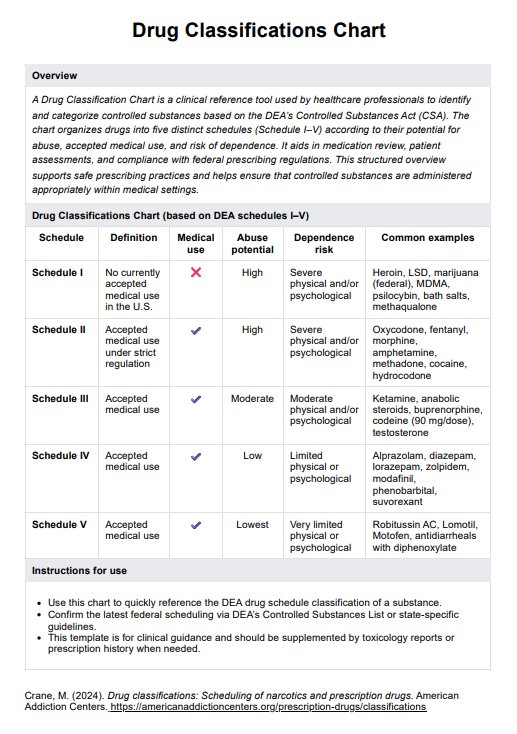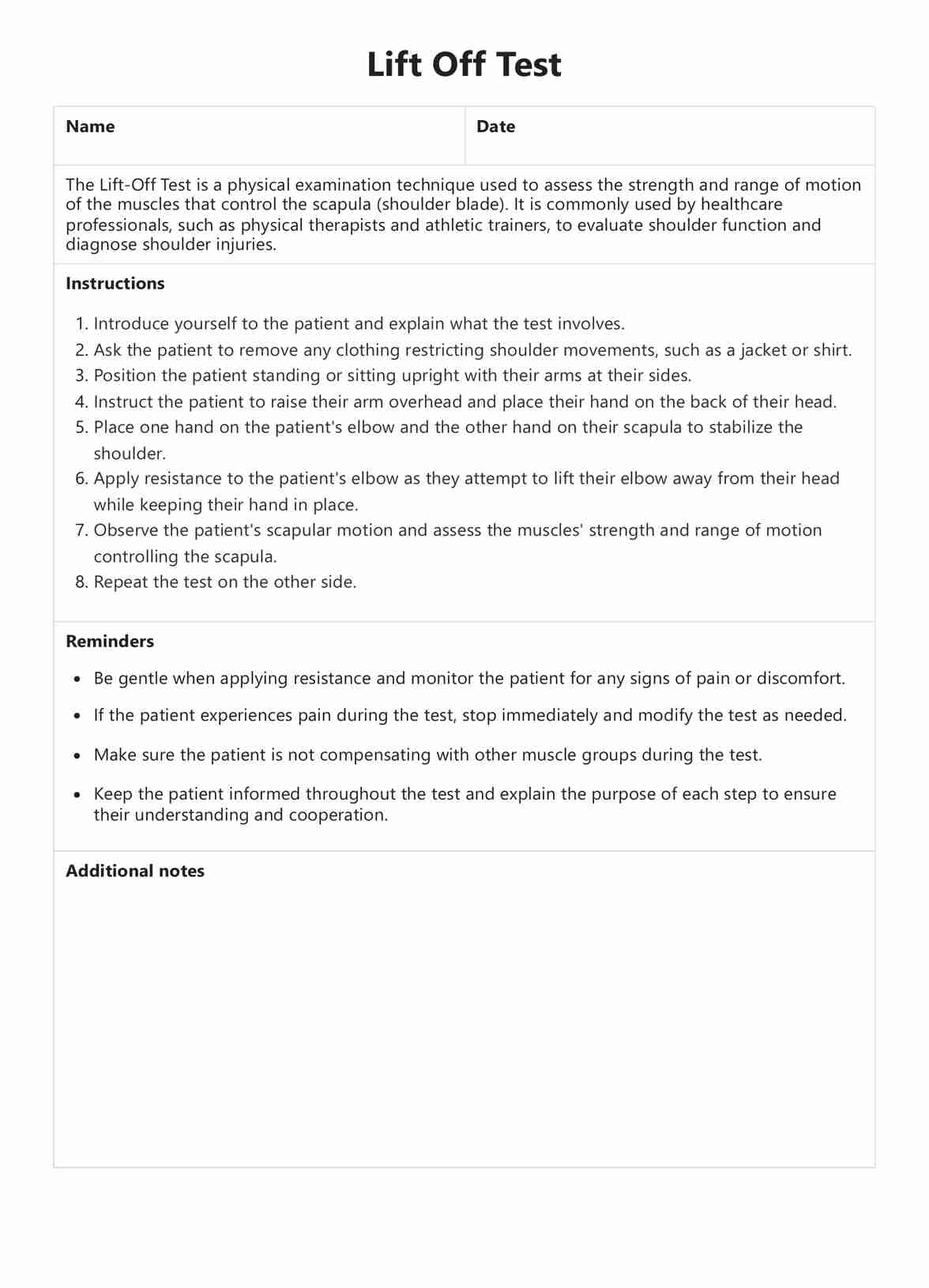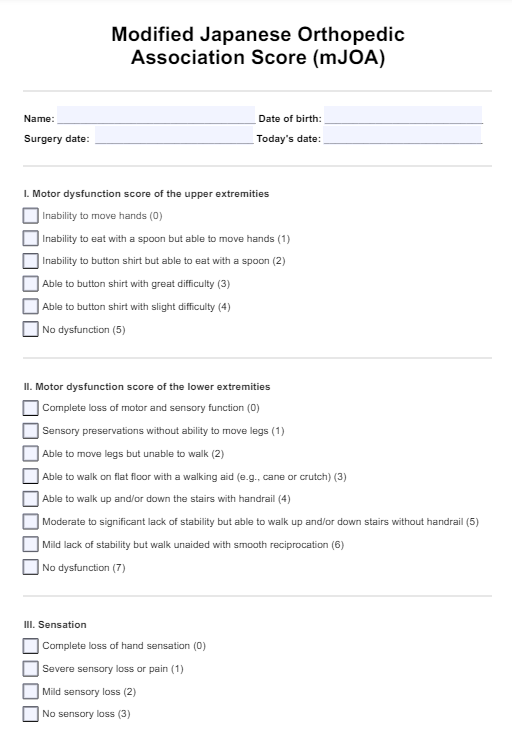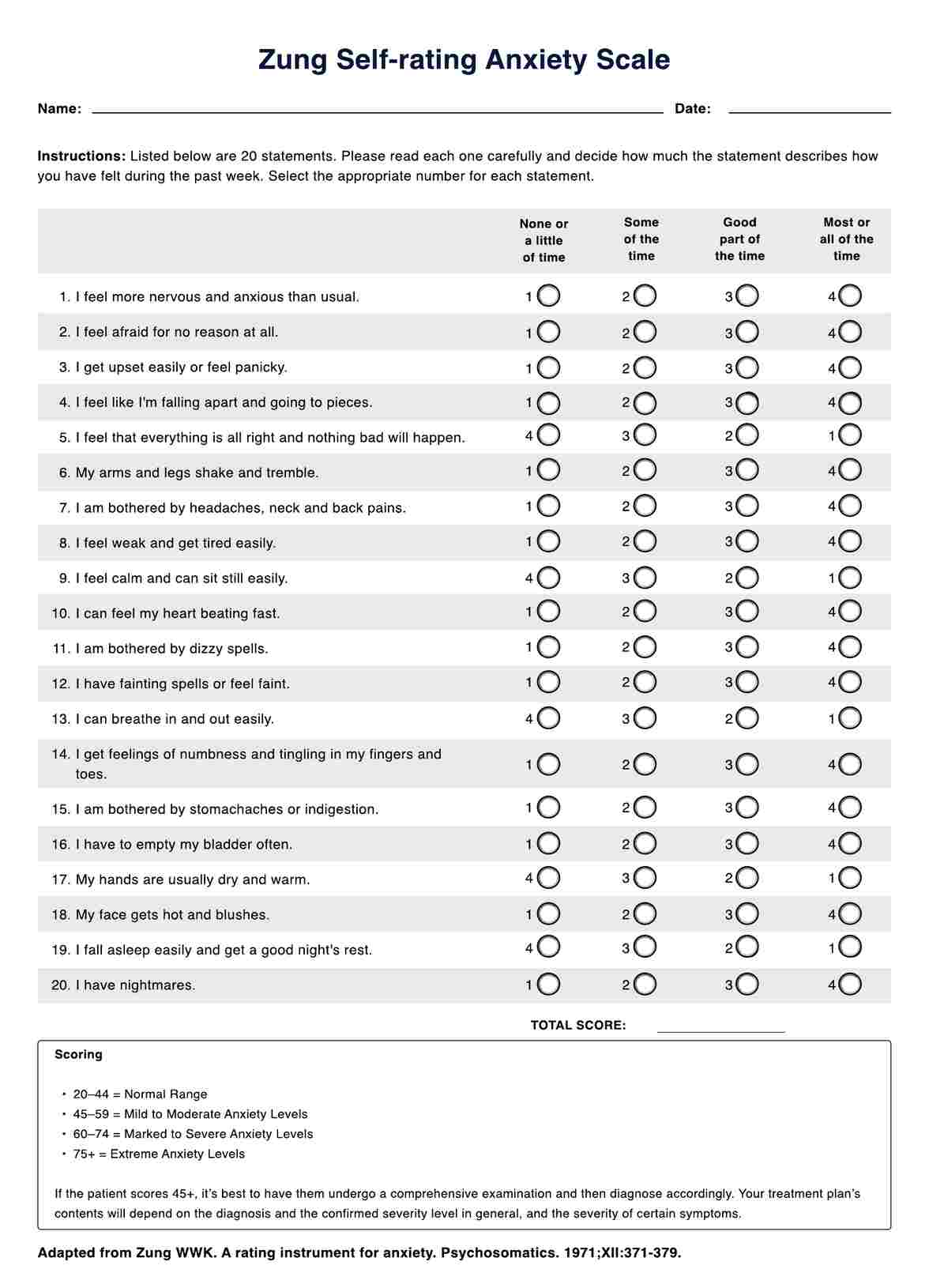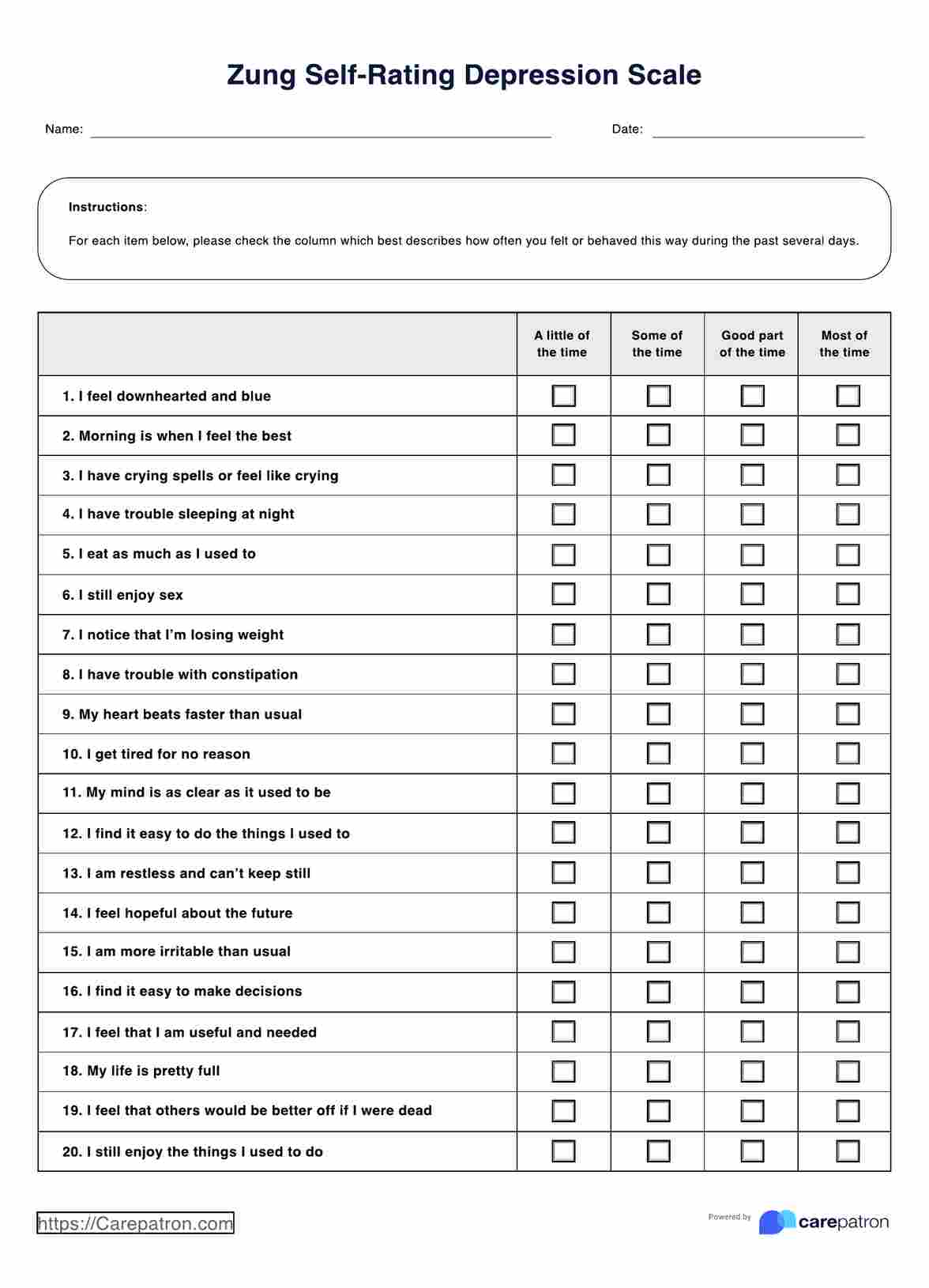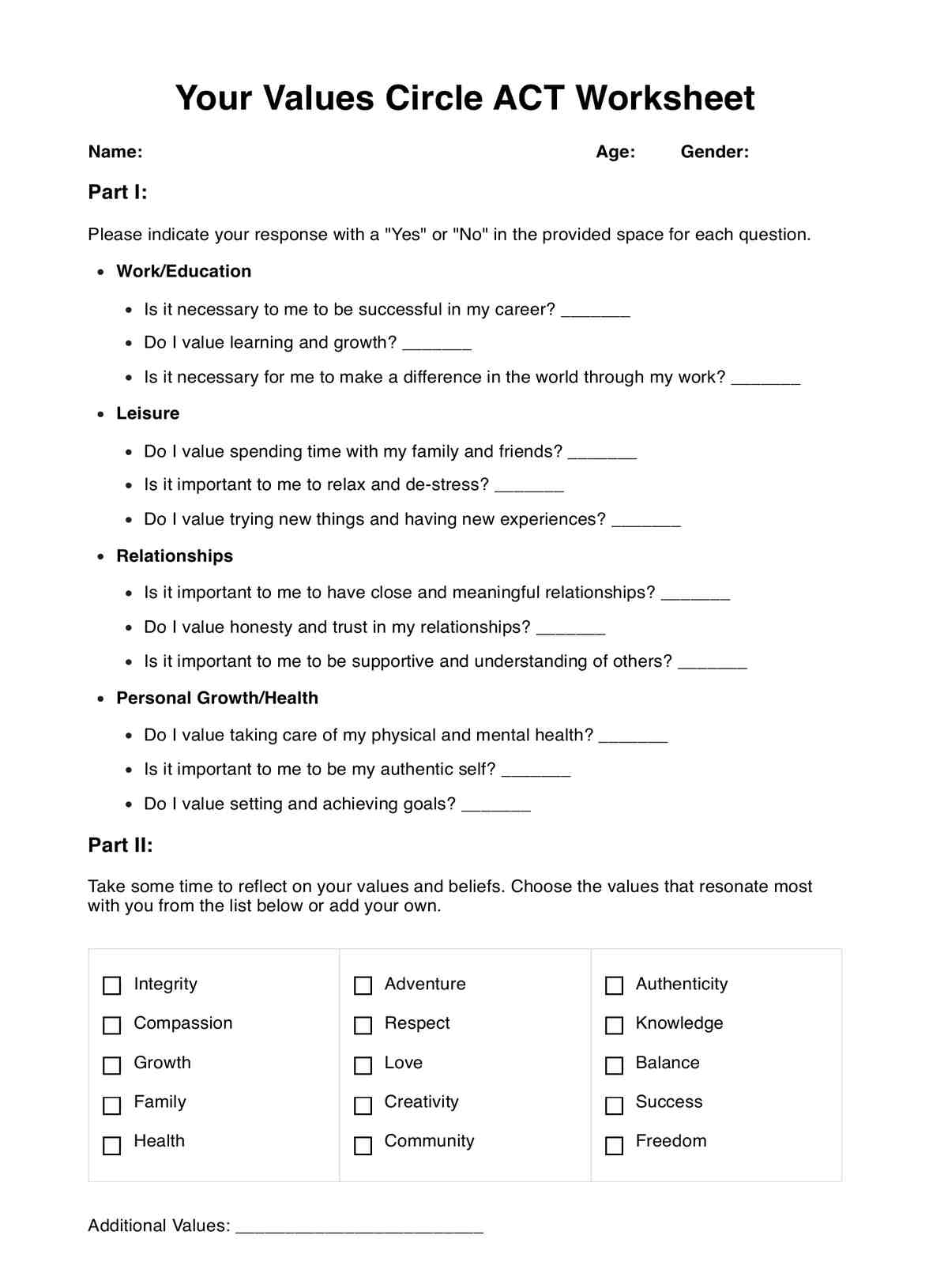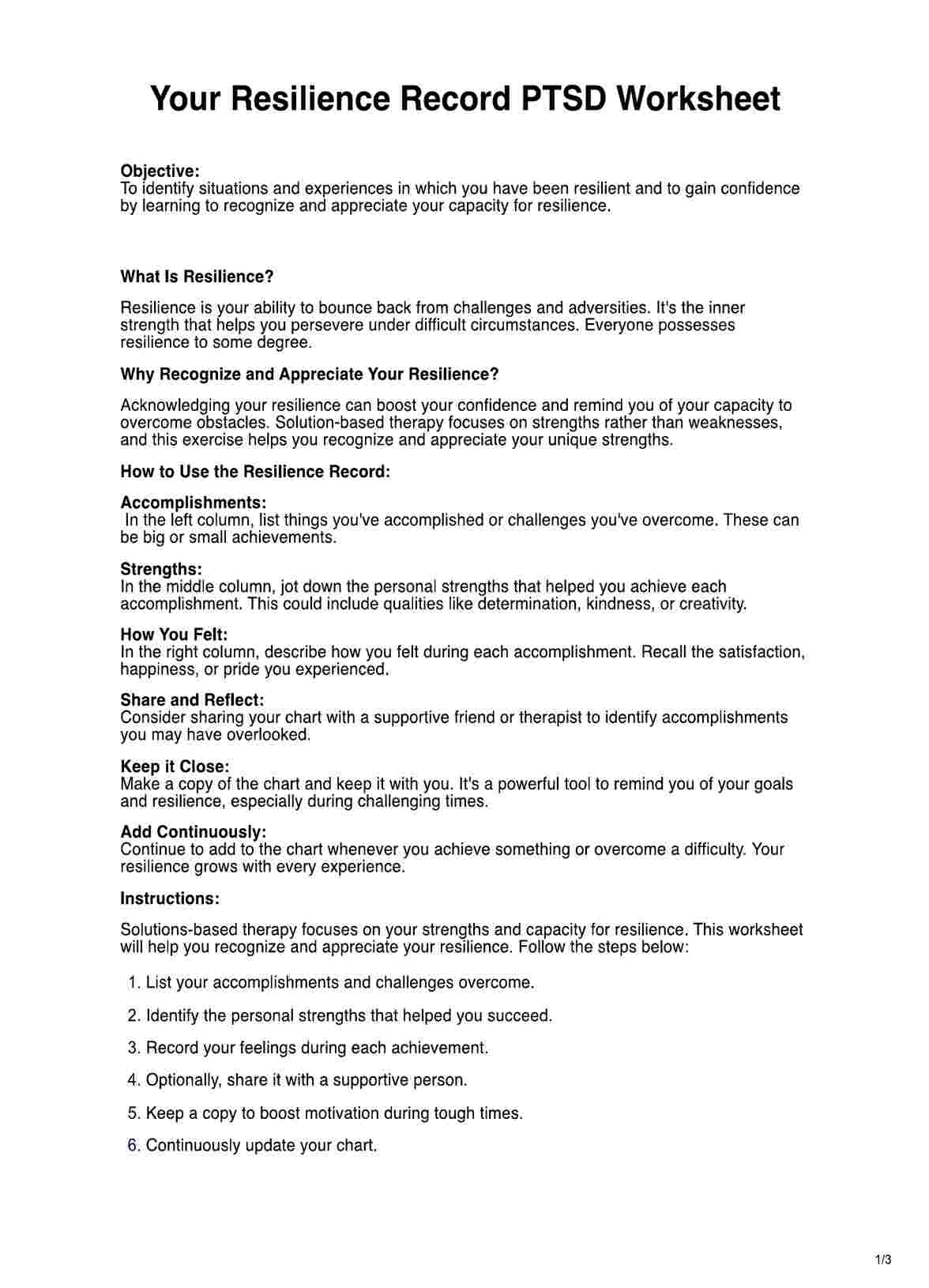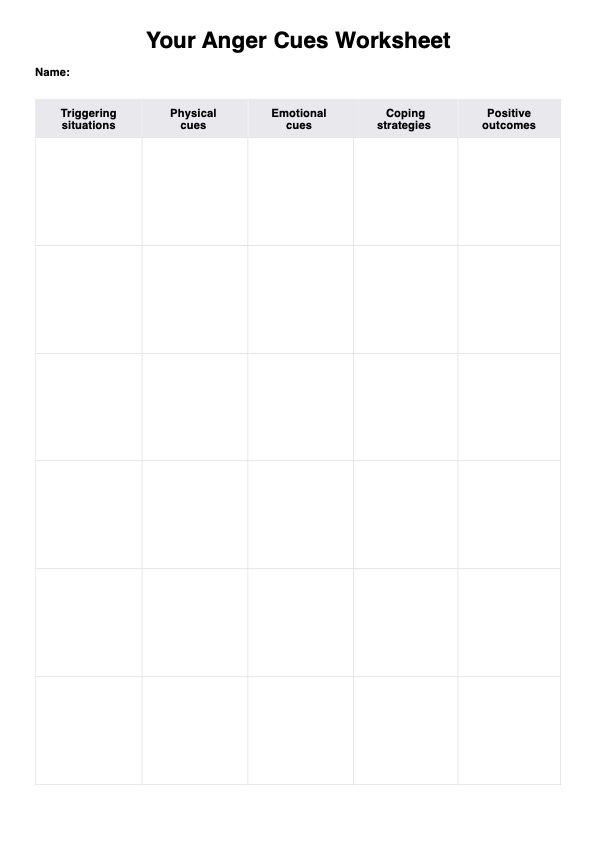Classical conditioning primarily explains learned responses to specific stimuli rather than innate behaviors or those learned through consequences (operant conditioning).
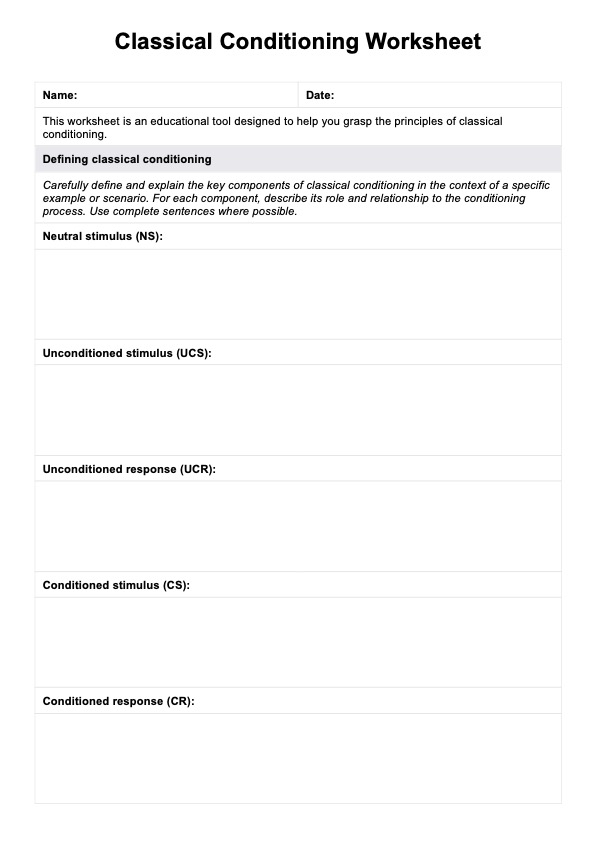
Classical Conditioning Worksheet
Learn more about classical conditioning with our tailored worksheet, perfect for students, therapists, and self-learners.
Use Template
Classical Conditioning Worksheet Template
Commonly asked questions
Extinction in classical conditioning occurs over varying periods, depending on the strength of the conditioned response and the frequency of exposure to the conditioned stimulus without the unconditioned stimulus.
EHR and practice management software
Get started for free
*No credit card required
Free
$0/usd
Unlimited clients
Telehealth
1GB of storage
Client portal text
Automated billing and online payments


